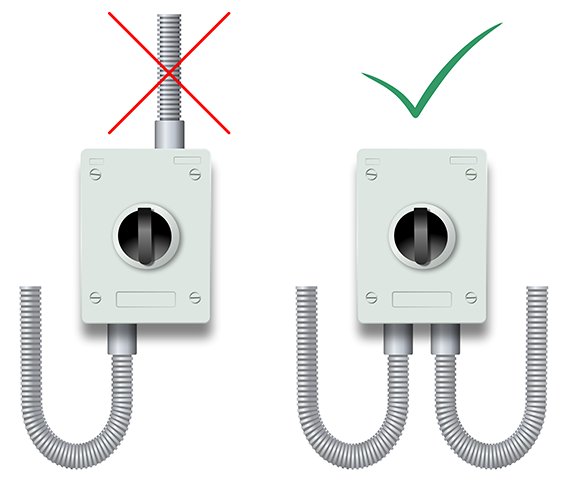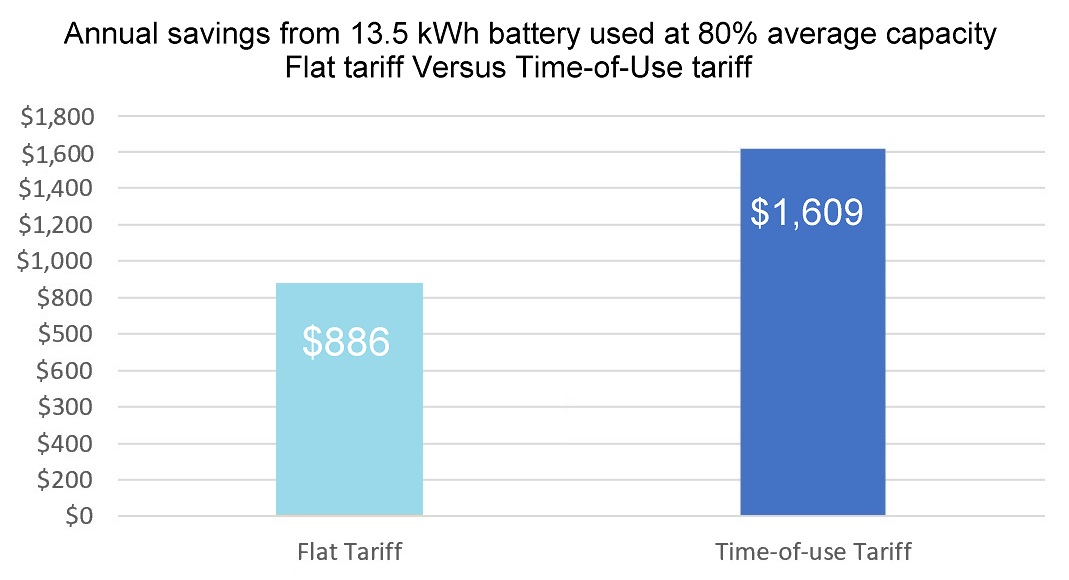Solar Batteries 101, Part 3: Owning A Battery System
By Finn Peacock – Chartered Electrical Engineer, Ex-CSIRO, Founder of SolarQuotes.com.au
Last Updated: 7th Apr 2025
Part 1 of my guide took you through the fundamentals of solar battery storage – what it is and how it works.
Part 2 showed you how to buy home batteries with confidence.
Part 3 – this page – gives food for thought on how owning a battery system can change your life and advice on monitoring and maintenance.
Let’s get to it!
- Your solar battery has been installed – now what?
- Smart usage – don’t be caught out in a blackout
- Battery “throughput”, and how it affects your warranty
- The ultimate home battery test – how long will you last ‘off grid’?
- VPP’s and time of use tariffs – how to save the most money possible
- Solar battery maintenance – what do they need?
- Making sure your battery is performing as expected over time
- Preparing for the worst – what to do if there’s an issue with your battery
- End of life, and beyond – disposal/recycling of batteries
Email: [email protected]
Tel: 08 7200 0177
Snail Mail: 3/39 Grenfell St, Adelaide, SA 5000 Australia
1) Your solar battery has been installed – now what?
Your battery system install has finished. What can you do as an owner, but as a non-expert, to check the installation? The following are some points to consider.
If cars can access where the battery is (garage etc.) – is it protected from bad drivers with a bollard or equivalent?
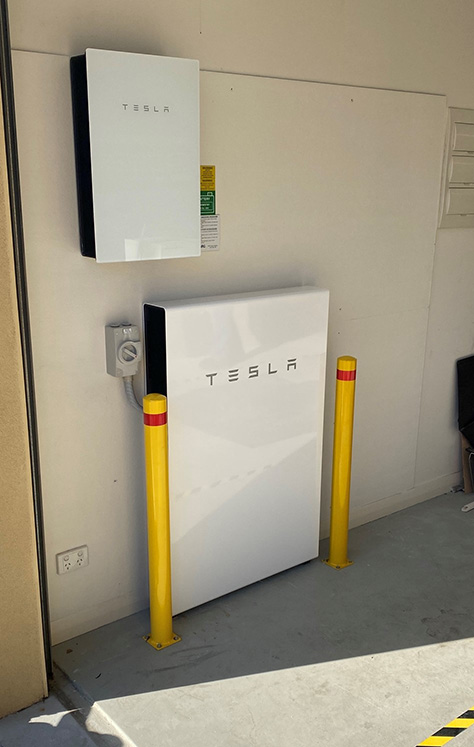
Not today, grandma!
If your battery provides backup, do you understand which house circuits are backed up?
Your home battery system will rarely back up your whole house. This is smart design. You don’t want your battery to be drained too quickly by non-essential appliances in a blackout.
Do you understand which appliances are on the backed-up circuits and the power they draw?
In my own home, I have my lights, fridge, air conditioner and internet router backed up. Specific powerpoints in my kitchen and living room are also on these circuits.
The aircon uses the most electricity by far, so I’m always careful with how I use it during a blackout.
Are all isolators “bottom entry”?
Avoid top entry, even if isolators are indoors. Top entry introduces a weakness where water can get in – whether that’s outdoor rain or indoor condensation.
Have you tested your backup by switching off the ‘main switch’ to your house?
Does your solar still work with the main switch off if your quote promised ‘apocalypse proof’ backup? This is the true test of whether you got what you paid for! See point #4 below for more detail.
Has the installer taken the time to show you how your home battery’s monitoring app works?
Being able to quickly tell how your battery system is going via a smartphone or computer app is a critical part of monitoring. Your installer should have sat down with you and given a demonstration of how the monitoring works. If they haven’t – get them back to provide you with a tutorial.
If your solar battery system can charge from off-peak electricity – do you understand when it should?
In rare instances, an off-peak electricity tariff may be lower than your feed-in tariff. If this is the case – you want to set your battery to charge whenever it occurs.
Are the current transformers (CTs) installed properly? Your monitoring app will show you some funky data if they’re not:
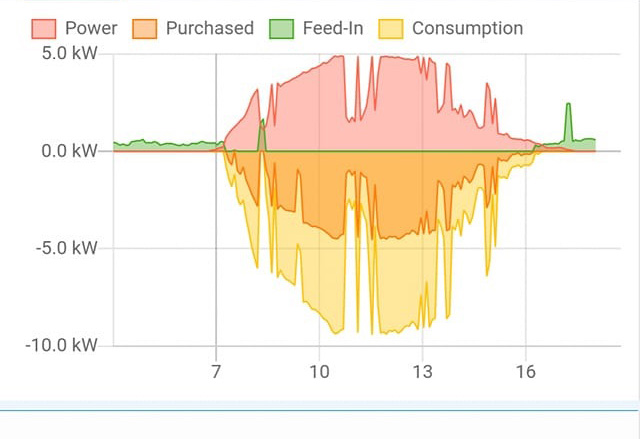
Everything is backwards on this graph, thanks to backwards CT clamps
Are overnight loads minimised?
You want to avoid large loads draining your battery system overnight, leaving you with little or no charge in the morning before your solar panels start generating power again. Whenever possible, it’s better to run them during the day.
If you have an electric car charger – is it configured to not draw from your battery?
You generally want to avoid charging an electric car from your battery. This is because you’ll usually save more money using your battery to power your home through the evening and then charging your car either with off-peak electricity late night or directly from solar during the day. Also, batteries wear out faster the more they are used.
Did your installer provide all relevant documentation?
Hopefully, you’ll never have to check this. But it’s important to have a copy of your home battery’s warranty and owner system care documents.
What you should have:
- Single line diagram (SLD) which shows how the battery is wired and what circuits are backed up.
- Australian address and contact details for the battery system manufacturer or their importer.
- Retailer Contact Details (who you paid for the battery system).
- List of hardware installed, with model description and serial numbers.
- Performance and operation manual including:
- Expected battery behaviour – when it charges/discharges, what logic it uses
- Expected life of battery system
- How to know when the battery is at ‘end of life’ and what to do when that day comes.
- Instructions explaining what you need to do when there is an alarm/error code showing on the battery or battery-inverter
- Shutdown and isolation procedures for emergency.
- Start-up procedure and verification checks.
- Instructions on how to identify when the system is not operating correctly and what to do in case of a system failure.
- Maintenance procedures and schedule.
- Commissioning records and installation checklist including quality assurance and date of installation.
- Equipment manufacturer’s documentation, data sheets, safety data sheets (SDS) for batteries and handbooks.
- A copy of the risk assessment undertaken by the installer. i.e. what you need to do if something goes horribly wrong (for example, the action to take when toxic fumes are present).
- Decommissioning information for battery replacement or battery removal including safe handling procedures for the battery and recommendations for recycling.
The requirement to provide this list of documents in the Australian Standard (AS 5139) so insist on getting them. I had a battery installed by AGL and I had to badger them even to get a Single Line Diagram of my installation!
Most good installers will provide you with these on installation day, but some can take a week or so. Give them a tap on the shoulder if you haven’t received all the necessary owner documents by then.
Pro-tip: Tape your SLD (single line diagram) inside your switchboard. Or print a copy and keep it somewhere accessible. Any electrician working on your home in the future should be able to see it.
Does your installer plan to come back for a final performance check?
Some installers go the extra mile and do a post-installation check within 30 days. Such checks make sure everything is running optimally and will pick up most issues.
2) Smart battery usage – don’t be caught out in a blackout
If you’ve read part 2 of this guide, you’ll know solar batteries should only back up essential circuits.
If your battery system goes into backup mode and you’ve backed up your whole house, you may not even realise a blackout has occurred. If you carry on as usual, a large load (oven, aircon, etc.) could cause your battery to trip – leaving you in the dark.
This is why it’s important to familiarise yourself with the monitoring app of your battery. Any decent manufacturer’s app will alert you if your home battery goes into backup mode.
Familiarise yourself with the ‘minimum discharge’ settings of your battery, if it has them. This allows you to set a minimum amount of energy in reserve ‘no matter what’ for blackout situations. Essentials – like LED lights – use little energy, so even with 20% capacity, you could keep your house running for hours.
Pro-tip: Some solar batteries come with a ‘storm mode’ feature. When activated in your monitoring app, it forces your battery system to charge from the grid in anticipation of a blackout. Certain batteries (like the Tesla Powerwall) claim to check weather feeds to activate storm mode automatically. In my experience, this functionality is far from perfect, with some quite severe storms not triggering ‘storm mode’.
3) Battery “throughput”, and how it affects your warranty
Most battery warranties specify the amount of ‘throughput’ they cover. Throughput is the total amount of energy your battery can store and discharge.
In other words – the harder you work your home battery, the faster it will fall out of warranty. Kind of like how most cars have a set ‘km traveled’ warranty condition.

The warranted energy throughput of a 12 kWh LG Chem Resu battery, in Megawatt-hours.
The exception is if you’ve got a battery system designed or warranted to cycle multiple times per day.
Tesla’s Powerwall, for example, warrants unlimited cycles – unless you’re using it in a virtual power plant (VPP):
If unlimited cycles are allowed, then your battery warranty will last for its maximum length – usually 10 years. But with a throughput limit it could end considerably sooner. Especially if it’s part of a VPP that works it hard.
4) The ultimate home battery test – how long will you last ‘off grid’?
Solar batteries are expensive. So you want to make sure you’re getting what you paid for when it comes to blackout protection.
You don’t need to wait for a tree to take out your power lines to see if your battery will perform as expected in a blackout. You can simulate blackout conditions yourself.
Note: Do not attempt this if you are at all uncomfortable with touching your switchboard. Your installer should be able to come over and show this to you.
Do this during the daytime, when your home battery system has ample charge—no point attempting this at 10 pm when it’s flat.
Go to your switchboard, and turn off the ‘main switch (grid supply)’.
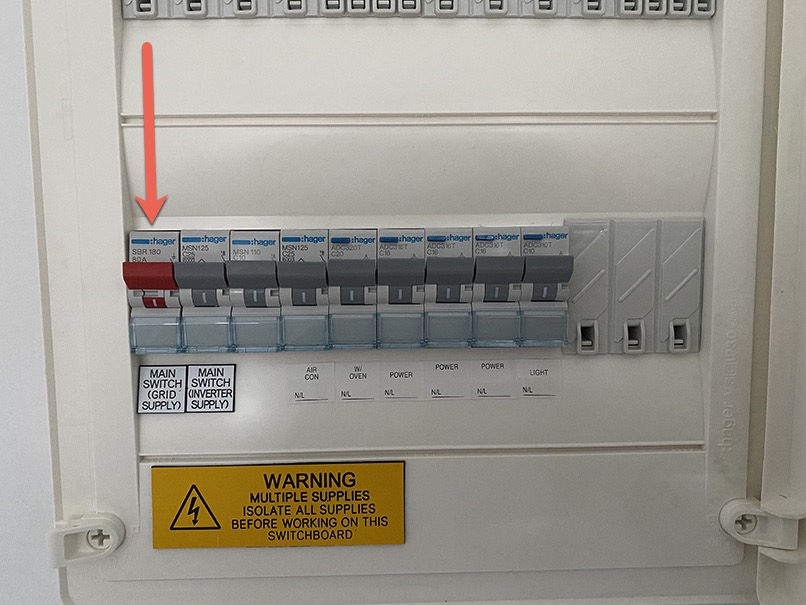
Turn this off!
Now your home is physically disconnected from the grid.
Next, check whether the appliances your installer promised would work – are working.
If you asked for ‘apocalypse proof’ (level 3) backup – check your monitoring app to ensure your battery system is charging from your solar panels.
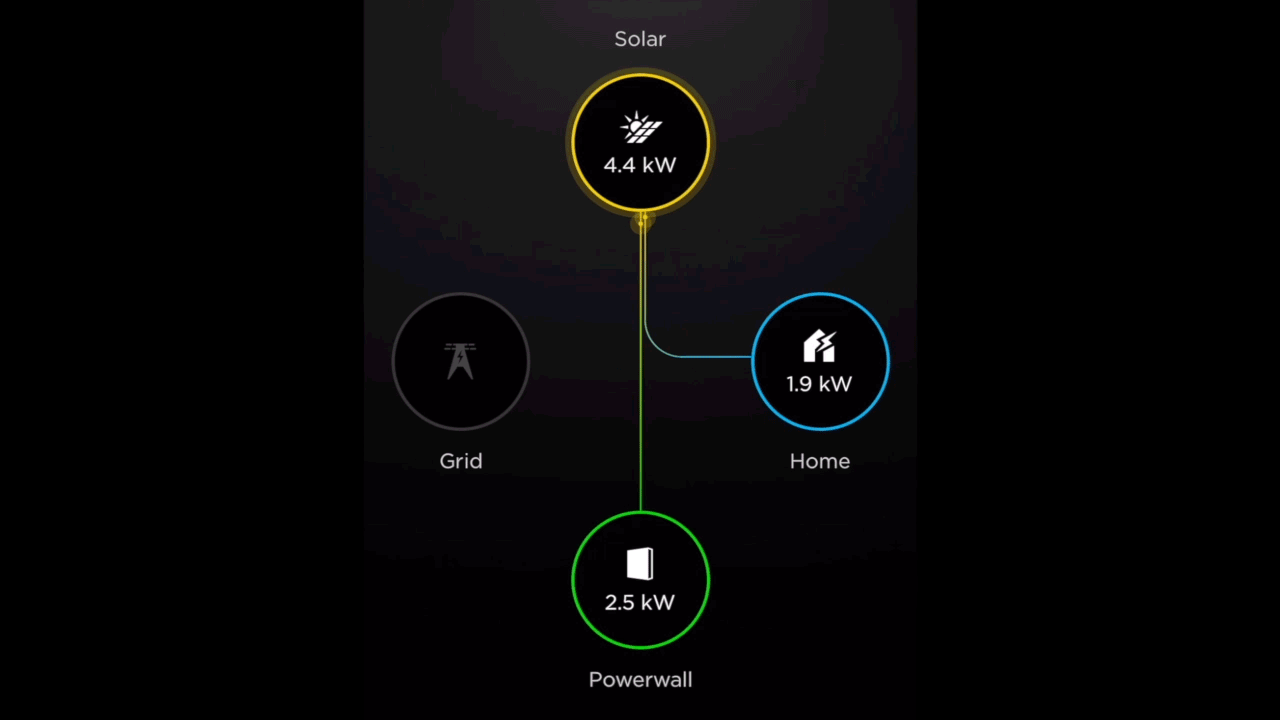
My home operating with ‘level 3’ backup
If everything is performing as the installer promised – awesome! You can turn the ‘main switch’ back on and feel reassured the money you spent was worth it.
If you feel like a challenge – keep the grid off and go about your day as usual. See how long your home battery can support your everyday lifestyle.
Once the battery system runs out of charge – use your monitoring app to conduct a post-mortem. What drew the most power and drained the battery the most? Then, be careful with your usage of those appliances in the event of a real blackout!
5) VPP’s and time of use tariffs – how to save the most money possible
‘Time of use’ electricity tariffs have become more popular with energy retailers. They charge you varying prices for electricity depending on the time of day it’s used, whereas a ‘flat’ electricity tariff is one price for electricity no matter what.
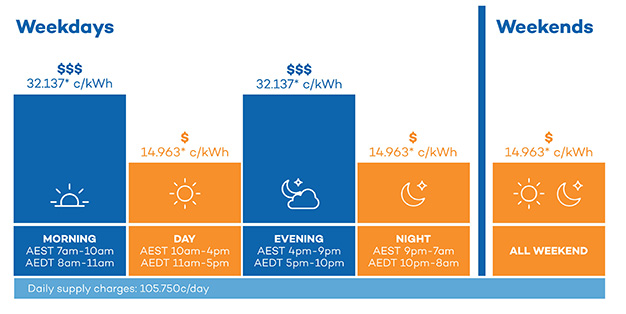
An example of a ‘time of use’ tariff in Tasmania. Image credit: Aurora Energy
Battery-owning households come out ahead if they’re on a time-of-use tariff. This is because you use your stored energy to avoid peak pricing periods.
As an example – using the following assumptions:
- Home in Sydney
- With high evening electricity consumption
- Has installed a Tesla Powerwall 2
- An average of 80% of the battery’s capacity is discharged during the evening peak period
Compare the difference in annual savings:
Even a mild time-of-use tariff will come out ahead of a flat tariff for a solar battery household – with a possible exception for households with unusual energy consumption patterns.
VPPs
Some Virtual Power Plants (VPPs) also offer further savings from home batteries. They’ll pay you a higher feed-in tariff for electricity discharged to the grid when the VPP needs it. Some will also ‘profit share’ when grid electricity prices spike.
Pro-tip: For advanced players only, consider joining Amber – it exposes you to wholesale electricity prices, meaning you can earn a whole lot more for your exports – but also get charged massive amounts too if you’re not careful when you use energy.
6) Solar battery maintenance – what do they need?
The vast majority of solar batteries installed these days use lithium-ion technology. These have the advantage of being ‘set and forget’ and very low maintenance!
While they will need a maintenance check every five years or so, there isn’t anything you, as a homeowner, need to do to keep them running.
Pro-tip: Get familiar with your battery’s monitoring app, and check it once a week. This will let you quickly spot any issues.
But – there are a couple of minor things to keep in mind as you live with your battery system:
- Some batteries need a constant internet connection to stay in warranty. Be wary of changing your wifi password! Your app should tell you if the internet connection goes down. Yet another reason you should familiarise yourself with it!
- Keep the battery area clean, especially if it’s outside. You don’t want leaves and other debris to block ventilation ports.
- If you have to switch the battery off – be careful. Some solar batteries will become ‘bricked’ if they are without power for an extended time – meaning, they’ll no longer be able to operate.
- Your installer should have placed an ‘ES’ sticker on your switchboard, but if an electrician is doing work on your property, make sure you tell them you have a battery system – just to be sure they realise.
Circuits will still be live, even if they turn off your electricity at your switchboard. Show them the SLD (single line diagram) mentioned in point #1.
7) Making sure your battery is performing as expected over time
As mentioned in part 2 – all lithium batteries degrade in performance over time.
Most manufacturers warrant a linear degradation. Keep a close eye on your battery through its monitoring app. Call your installer if, for example, you are getting 90% capacity in year 3 but 80% in year 4 – that is too big a drop in capacity.
Pro-tip: Make sure you check your solar system performance and battery performance annually, comparing it to previous years.
If something looks off – like a significant drop in performance year-over-year – go back to your installer. Please don’t leave it for months until your system breaks down completely.
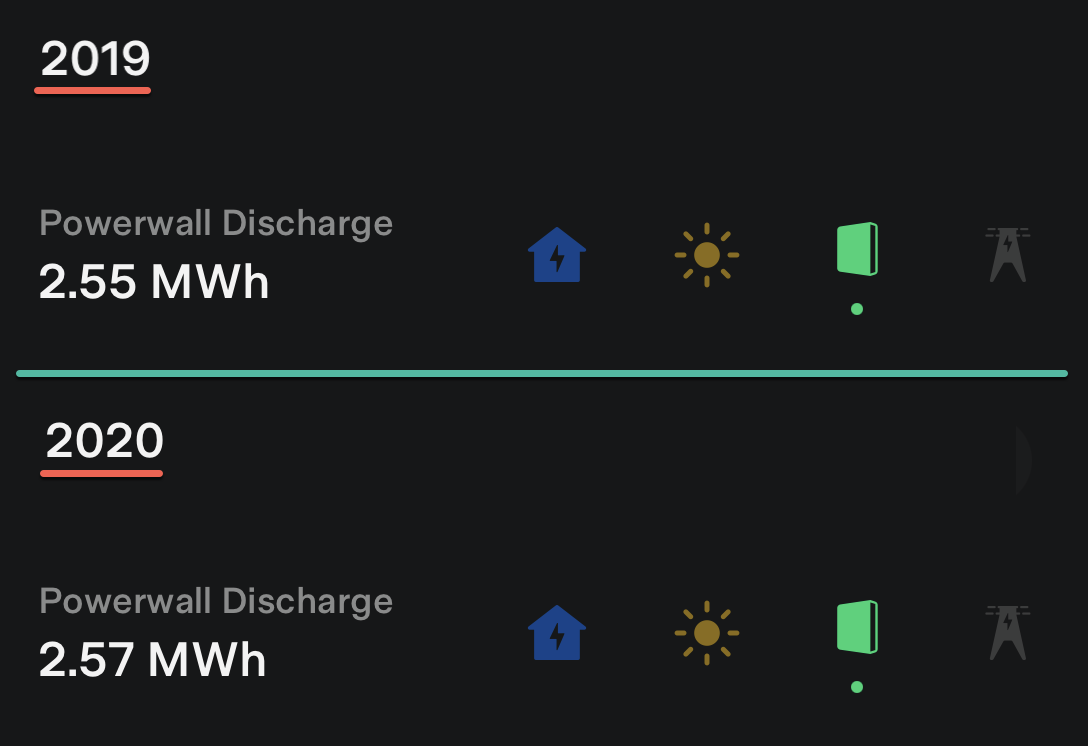
A screenshot from my Tesla monitoring app, comparing performance between 2019 and 2020
Remember – home batteries are a new technology, and none have reached their full warranty length yet. This is why it’s important for owners to monitor how they perform in the real world.
8) Preparing for the worst – what to do if there’s an issue with your battery
Hopefully, if anything goes wrong, the worst issues you’ll have to deal with will involve error codes and the battery system not working. In this case, all you need to do is call your installer and have them come out to diagnose and fix the problem.
But, in a (rare) worst-case scenario, lithium batteries can catch fire (aka ‘thermal runaway’). Few manufacturers (except, unsurprisingly, Tesla) provide formal documentation on what to do if this happens. Hopefully, your chosen battery comes with safety instructions. Please read them.
Lithium-ion battery fires are not like your standard house fire. They burn intensely, emit toxic fumes, and not all extinguisher types are effective against them.
In the event of a battery fire, evacuate anyone in your home and call 000 immediately.
9) End of life, and beyond – disposal/recycling of batteries
At the moment, there is no Australia-wide battery recycling scheme available. But the good news is in the future, there will be recyclers happy to take solar batteries off your hands. This is because they contain valuable materials.
In the meantime – some are more recyclable than others. Tesla, for example, claims the total amount of non-recyclable material from a Powerwall can fit in the palm of your hand.
Some manufacturers are better than others at planning for future recycling/safe disposal. The main question to ask someone trying to sell you a battery is: What is the manufacturer’s approach to end of battery life? How recyclable is it?
The next step
I hope this three-part series on home battery storage systems has been useful. If you have any burning questions, my contact details are:
Email: [email protected]
Tel: 08 7200 0177
Snail mail: 3/39 Grenfell St, Adelaide, SA 5000 Australia
If you’ve read this guide but still don’t have a battery, I can help you get quotes from high-quality, trusted installers quickly and easily:
Finn Peacock, founder of SolarQuotes.com.au
